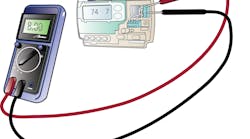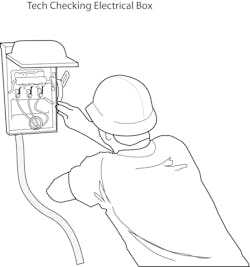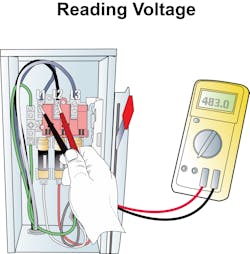I often hear about a perceived division evolving in the HVAC industry. The division appears between those in the field who developing extraordinary diagnostic powers, and those who default to being parts and box changers. Let’s take a closer look at which camp you may belong to and what you might do to migrate towards developing your own extraordinary diagnostic powers.
Your ability to solve customer problems determines your primary worth in this industry. This is true for an installer, a maintenance or service technician, or even a salesperson.
Basic Diagnostic Ability
Within a year or so of entering this trade, necessity requires an installer to follow a duct schematic, hang duct, connect a fitting, install a grille, and connect the distribution system to the equipment.
A maintenance tech can follow a work order, greet the customer, replace a filter, clean a coil, complete an inspection, and finalize the paperwork.
A service tech can complete basic electrical, heating, and refrigeration diagnostics, isolate a defect, and prescribe a replacement part.
A salesperson can determine equipment size and recommend a replacement. He or she can develop a limited scope of work, price the job, prepare the agreement, get the job sold, and hand off the replacement proposal to the office.
Here’s the question to ask yourself: If these are the basic diagnostic skills required during that first year in the trade, how far beyond these basic skills have you advanced? Especially if you have been in the trade for three years, five years, 10 years, or 20 years.
If your painful answer is that your diagnostic skills are still hovering near the level of a novice, I invite you to step up and pump some life into your career by expanding those skills. If
your diagnostic ability is still basic, odds are you’ve become comfortable with being a box or parts changer.
If you’re a company owner or manager who has settled for a culture of being box and parts changers, your success is most likely by making one-time sales to your customers, at exorbitant prices, with minimum service. You also make money by installing patches rather than delivering permanent solutions that result in superior performance and efficiency.
If you’re satisfied with that, there is no reason to read the rest of the article. But if you’ve got the desire to advance your career and company, read on.
The first step in developing extraordinary diagnostic powers is to look beyond the obvious. The typical installer, service tech, and salesperson unfortunately carry less than five weapons in their personal diagnostic arsenal. What if, through study and practice, you could increase that arsenal to 10, 25, or 50 weapons you could draw from to more effectively solve customer complaints and permanently resolve the system defects you encounter? The number of weapons in your diagnostic arsenal determines your worth to customers. It also shows your level of professionalism.
Looking beyond the obvious often requires seeing the invisible.
How to See the Unseen Through Measurement
Think about electricity. You can’t see it. It is truly invisible. So, if you see sparks flying, something is very wrong, right?
Electrical problems are “seen” by using test instruments that help you understand what is happening. An electrical test instrument gathers signals through a correctly placed probe and displays any one of many electrical measurement values.
Your diagnostic skill level can be determined by how you compare the electrical values on the screen to industry standards or specifications. This is what allows you to interpret the presence of an irregularity. The level of your diagnostic ability is determined by your ability to figure out what’s right or wrong by comparing what should be to what your measurement indicates.
If voltage should be 230 Volts, but you measure only 172 Volts, your extraordinary diagnostic powers will lead you through a step-by-step process that will pinpoint the real cause of the problem and help you prescribe a permanent solution for that defect.
Once the repair is completed, you use your instruments to “see” the change in voltage and perhaps other electrical values to assure a full and complete solution has been delivered.
Moving Down the Diagnostic Path
Hopefully, you’re beginning to see your diagnostic powers can be increased by seeing the unseen as you learn to use test instruments. As with most skills, learning to use test instruments takes new knowledge, study, and practice.
This is the path to developing extraordinary diagnostic powers. It is a challenging, but rewarding journey that pays big dividends. I invite you to start down this path in the very near future.
Rob “Doc” Falke serves the industry as president of National Comfort Institute -- an HVAC-based training company and membership organization. If you're an HVAC contractor or technician interested in several free air diagnostic procedures, contact Doc at [email protected] or call him at 800-633-7058. Go to NCI’s website at nationalcomfortinstitute.com for free information, articles, and downloads.












